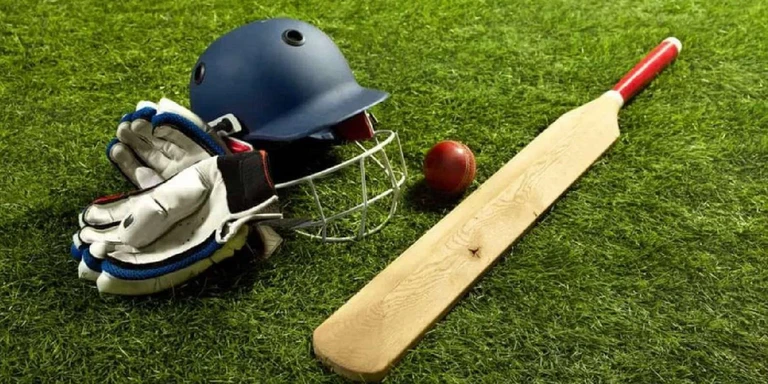Cricket Rules changed: MCC announces rule changes – Marylebone Cricket Club, the stakeholders of cricket have passed several law changes in the game of cricket in their 2022 code. The changes are announced but will only take in effect in October. There had been several suggestions made, but those changes were approved last week, with an intention to uphold the game of cricket. Follow InsideSport.IN for More Updates
Cricket Rules changed: Saliva banned on ball, Mankad legalised as Run out as MCC changes rules- check out
Also Read: ICC New Rules: No need to ban bouncers, club will remain vigilant on concussion: MCC
Cricket Rules changed: Saliva banned on ball, Mankad legalised as Run out as MCC changes rules- check out
Some of the major changes include that saliva will not be used on the ball. The law was initially brought in due to pandemic times, but after further deliberation, the change was brought in permanently to avoid any grey areas and reduce ball-tampering. Crossing while the catch is being taken has also been chalked out, with a new batsman taking strike every time a batsman is dismissed. The rule was trialed in The Hundred and adopted by the MCC to a worldwide level.
Fraser Stewart, MCC Laws Manager, said: “Since the publication of the 2017 Code of the Laws of Cricket, the game has changed in numerous ways. The 2nd edition of that Code, published in 2019, was mostly clarification and minor amendments, but the 2022 Code makes some rather bigger changes, from the way we talk about cricket to the way it’s played.”
Cricket Rules changed: Saliva banned on ball, Mankad legalised as Run out as MCC changes rules- check out
Cricket Rules changes: Here’s the updates laws
Laws 27.4 and 28.6 – Unfair movement by the fielding side
Until now, any member of the fielding side who moved unfairly was punished only with a ‘Dead ball’ – potentially canceling a perfectly good shot by the batter. Given the action is both unfair and deliberate, it will now see the batting side awarded 5 Penalty runs.
Law 38.3 – moving the running out of the non-striker
Law 41.16 – running out the non-striker – has been moved from Law 41 (Unfair Play) to Law 38 (Runout). The wording of the Law remains the same.
Law 41.3 – No saliva
When cricket resumed following the onset of Covid-19, playing conditions were written in most forms of the game stating that applying saliva to the ball was no longer permitted. MCC’s research found that this had little or no impact on the amount of swing the bowlers were getting. Players were using sweat to polish the ball, and this was equally effective.
The new Laws will not permit the use of saliva on the ball, which also removes any grey areas of fielders eating sugary sweets to alter their saliva to apply to the ball. Using saliva will be treated the same way as any other unfair method of changing the condition of the ball.
Cricket Rules changed: Saliva banned on ball, Mankad legalised as Run out as MCC changes rules- check out
Law 1 – Replacement players
The introduction of a new clause, Law 1.3, explains that replacements are to be treated as if they were the player they replaced, inheriting any sanctions or dismissals that the player has done in that match.
Law 18 – Batters returning when Caught
First trialled by the ECB in The Hundred at the suggestion of MCC, Law 18.11 has now been changed so that, when a batter is out Caught, the new batter shall come in at the end the striker was at, i.e. to face the next ball (unless it is the end of an over).Law 20.4.2.12 –
Cricket Rules changed: Saliva banned on ball, Mankad legalised as Run out as MCC changes rules- check out
Dead ball
The new edition sees several changes to the Dead ball Law, the most significant of which is the calling of Dead ball if either side is disadvantaged by a person, animal or other object within the field of play.
From a pitch invader to a dog running onto the field, sometimes there is outside interference – if this is the case, and it has a material impact on the game, the umpires will call and signal Dead ball.
Law 21.4 – Bowler throwing towards striker’s end before delivery
If a bowler throws the ball in an attempt to run out the striker before entering their delivery stride, it will now be the Dead ball. This is an extremely rare scenario, which has until now been called a No ball.Law
22.1 – Judging a Wide
In the modern game, batters are, more than ever, moving laterally around the crease before the ball is bowled. It was felt unfair that delivery might be called ‘Wide’ if it passes where the batter had stood as the bowler entered his/her delivery stride. Therefore, Law 22.1 has been amended so that a Wide will apply to where the batter is standing, where the striker has stood at any point since the bowler began their run-up, and which would also have passed wide of the striker in a normal batting position.
Cricket Rules changed: Saliva banned on ball, Mankad legalised as Run out as MCC changes rules- check out
Editor's Pick
 Cricket
Watch: KL Rahul suffers freak injury scare in nets before IND vs AUS Boxing Test
Cricket
Watch: KL Rahul suffers freak injury scare in nets before IND vs AUS Boxing Test


















































